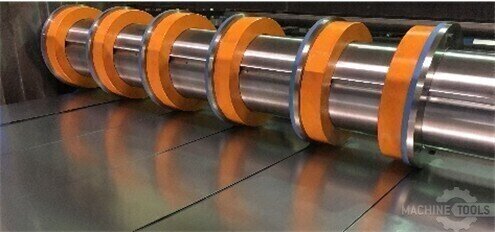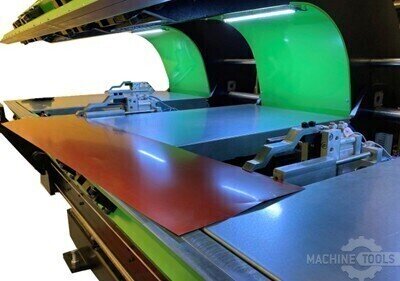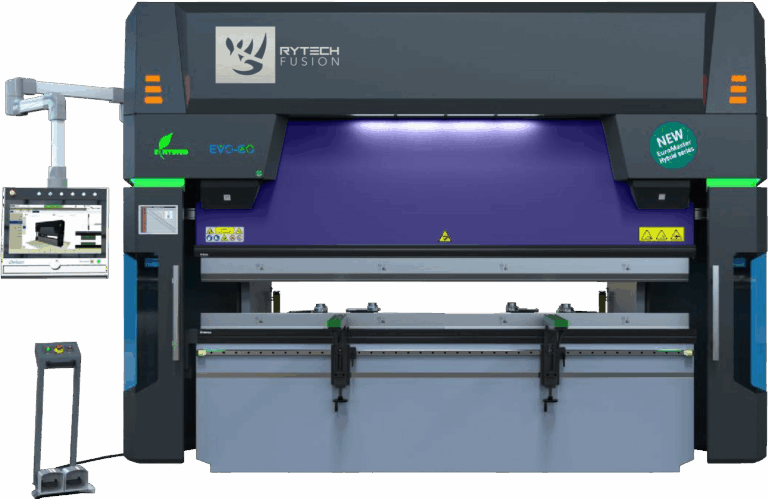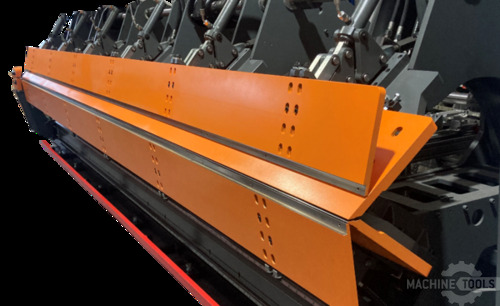As someone who grew up in southern Chicago, I learned early on the value of hard work and honest relationships—qualities that have served me well throughout my career in metal fabrication. My journey brought me to Mac-Tech, where I now help roofing and fabrication shops across the country evaluate and upgrade their production lines. Whether it’s optimizing a legacy folder, integrating a new combi-beam, or overhauling a coil-fed panel system, my focus is always on one thing: giving customers the tools and insights they need to outpace the competition and maximize ROI.
Leveraging Experience to Drive Panel Forming Efficiency
Every fabrication shop is unique, but the challenges they face are strikingly similar. Tight deadlines, labor shortages, rising material costs, and the constant pressure to deliver higher quality at lower prices. Over the years, I’ve worked side-by-side with shop owners, production managers, and operators to address these hurdles—often starting with a hard look at their slitting, forming, and folding equipment. My approach is hands-on and customer-first: I don’t just sell machines; I help build solutions that fit real-world needs, from folders and shears to slitters, decoilers, and advanced panel benders.
Understanding Coil-Fed Production: Key Challenges in Slitting, Forming, and Folding
Coil-fed production lines are the backbone of efficient panel fabrication, but they come with their own set of challenges. Slitting accuracy, material handling, and changeover speed all have a direct impact on downstream folding and forming operations. Common pain points I see include:
- Material waste from imprecise slitting or excessive trim
- Bottlenecks at the folder due to slow manual setups
- Operator fatigue and errors, especially on longer runs or complex profiles
- Footprint constraints, where space is at a premium and every square foot counts
The right equipment—properly matched to your product mix and workflow—can turn these challenges into competitive advantages.
Evaluating Machine Performance: Combi-Beam vs. Double Folder Technologies
When it comes to boosting panel forming efficiency, two machine types stand out: the combi-beam folder and the double folder. Both are formidable, but each brings its own strengths and trade-offs.
Combi-Beam Folders
These machines offer the flexibility of switching between different toolsets (straight, radius, and hemming beams) within one cycle—without manual intervention. For shops running a wide variety of profiles or switching between materials, this flexibility is invaluable. Combi-beams excel at:
- Reducing setup times for short runs or frequent changeovers
- Accommodating complex bends and multi-profile production
- Automating tool changes, minimizing operator skill dependency
However, they typically require a larger footprint and come at a higher initial investment. For high-volume, repetitive work, some of that flexibility may go unused.
Double Folders
Double folders feature two bending beams, allowing for simultaneous up-and-down bends without flipping the panel. This design is ideal for straight panel production and symmetrical profiles, delivering:
- High throughput on repetitive jobs
- Consistent, tight tolerances across long runs
- Compact layouts suitable for space-constrained shops
The limitation? Less flexibility for complex or asymmetrical bends, and slightly longer setups if frequent profile changes are needed.
Matching Machine Capabilities to Fabrication Needs: Speed, Precision, and Waste Reduction
The best machine is the one that aligns with your product mix, operator skill level, and growth trajectory. Here’s how I help customers make the right call:
- Speed: Double folders shine on high-volume, standardized products. If your backlog is full of long, straight panels, the throughput difference is significant.
- Precision: Both technologies can deliver tight tolerances, but servo-driven combi-beams often edge ahead on complex shapes or when bending pre-painted materials.
- Waste Reduction: Automation in tool changes (combi-beam) or simultaneous bends (double folder) both cut scrap and rework, but the biggest gains come from matching the machine to your most common jobs.
- Labor Savings: Modern folders—especially those with CNC automation—reduce the need for highly skilled operators, freeing up your best people for other tasks.
STEFA LCS3
Upgrading for Growth: Practical Steps to Boost Throughput and Minimize Material Loss
A successful upgrade isn’t just about buying a new machine—it’s about optimizing the entire process. I typically recommend:
- Audit your current workflow: Identify bottlenecks, material waste points, and labor-intensive steps.
- Project future needs: Will your product mix change? Are you targeting new markets or higher volumes?
- Demo both technologies: Run sample jobs on a combi-beam and a double folder. See the real-world differences in cycle time and finish quality.
- Plan for automation: Consider integrating your folder with upstream slitters, decoilers, and downstream handling to maximize efficiency.
- Train your team: New equipment is only as good as the operators running it. Invest in hands-on training and support.
Real-World Results: Case Studies in Enhanced Efficiency and Reduced Waste
One Midwest roofing manufacturer recently upgraded from a legacy hydraulic folder to a servo-driven double folder. The result? Panel throughput increased by 30%, and scrap rates dropped by half—thanks to improved repeatability and faster cycle times.
Another customer, a custom fabrication shop with a diverse product line, chose a combi-beam system. Automated tool changes reduced changeover times from 15 minutes to less than 2, and the shop was able to take on more short-run, high-margin jobs without adding shifts.
In both cases, the key was matching the technology to the business model and providing ongoing support—something we pride ourselves on at Mac-Tech.
Conclusion: Making Informed Choices for Long-Term Success in Metal Panel Fabrication
There’s no one-size-fits-all answer in panel forming. The right choice depends on your unique mix of products, volumes, operator skills, and growth plans. My role is to help you cut through the noise, weigh the real-world pros and cons of each technology, and implement solutions that deliver measurable results—now and for years to come.
Whether you’re considering a new folder, upgrading your slitter, or looking to integrate automation across your line, the best results come from a partnership—one built on trust, expertise, and a shared commitment to your success.
Frequently Asked Questions
When is the right time to upgrade a roll former or folder?
If you’re consistently missing delivery targets, seeing rising scrap rates, or struggling to find skilled operators, it’s time to evaluate your equipment. Upgrading before you reach a crisis point allows for a smoother transition and positions your business for growth.
How do servo-driven folders compare to hydraulic systems?
Servo-driven folders offer faster cycle times, greater precision, and lower maintenance costs. They’re especially valuable for shops running a variety of profiles or working with delicate materials, such as pre-painted coil.
What’s the difference between a combi-beam and a double folder?
A combi-beam folder offers automated tool changes for different bends within the same cycle, making it ideal for complex or variable profiles. A double folder uses two bending beams for fast, symmetrical bends—great for high-volume, straight panel production.
What are signs a roll forming line is no longer cost-effective?
Frequent downtime, excessive scrap, inability to meet new design requirements, and rising repair costs are all red flags. If your line is holding back production or limiting your ability to take on profitable work, it’s time to consider an upgrade.
Can I integrate new folders with my existing coil-fed or slitting equipment?
Absolutely. Many modern folders are designed to interface with upstream and downstream equipment, maximizing your investment and minimizing disruption during upgrades.
If you’re ready to explore your options or just want a second opinion on your current setup, I’m here to help. Reach out for a walkthrough, live demo, or a no-obligation upgrade quote. Let’s build a smarter, more efficient shop—together.
Patrick (Pat) O’Neill
National Product Manager & Regional Sales Executive, Mac-Tech
pat@mac-tech.com | 414-232-7929
Get Weekly Mac-Tech News & Updates








